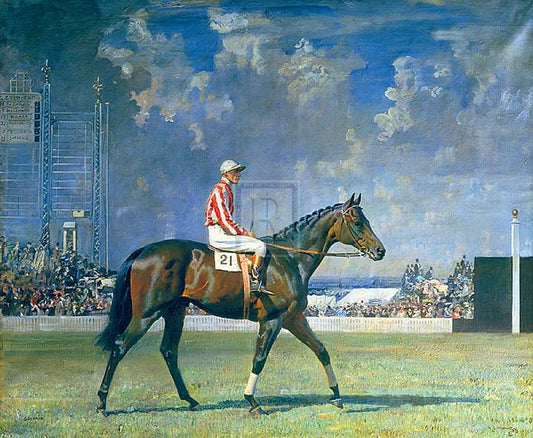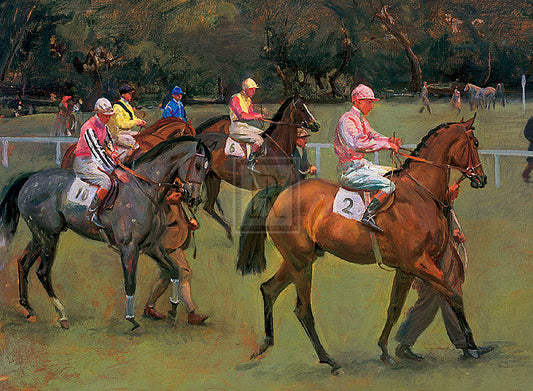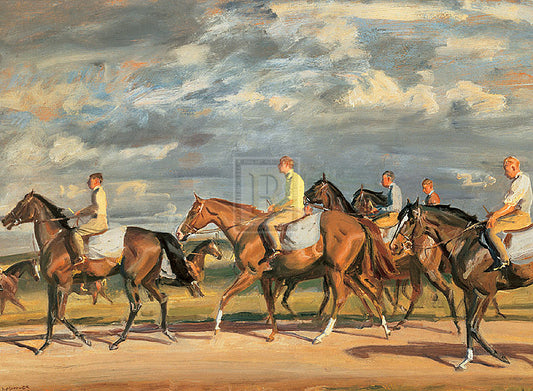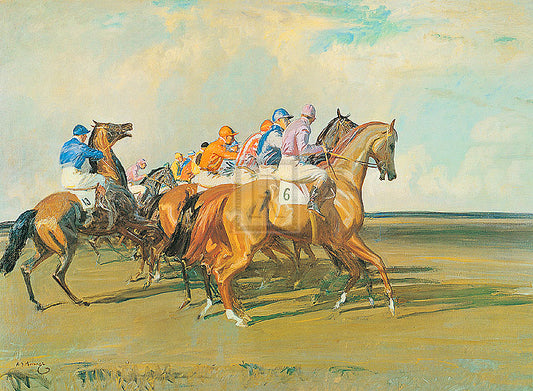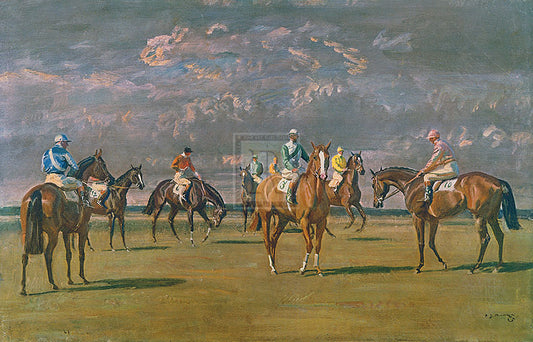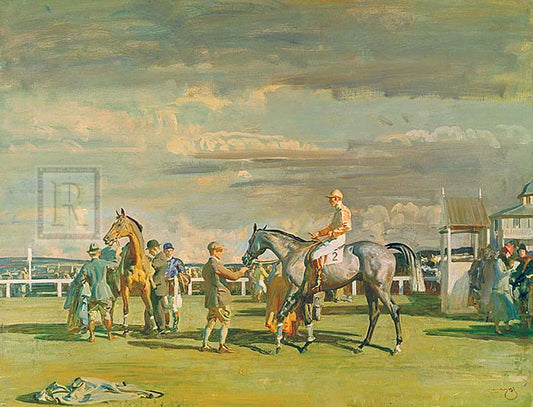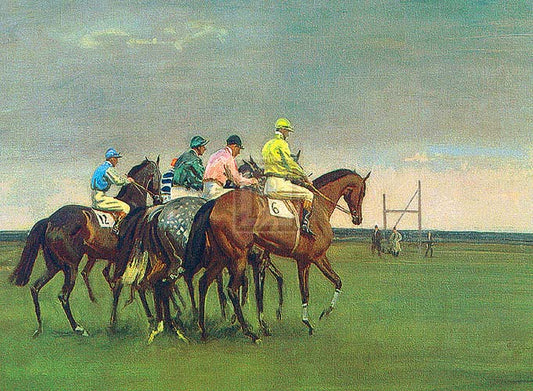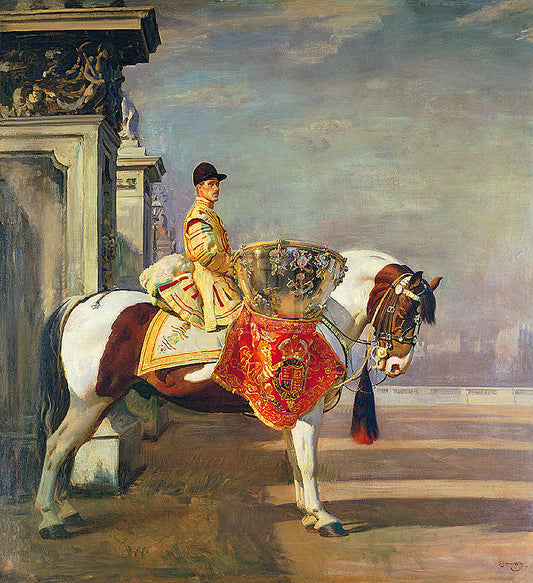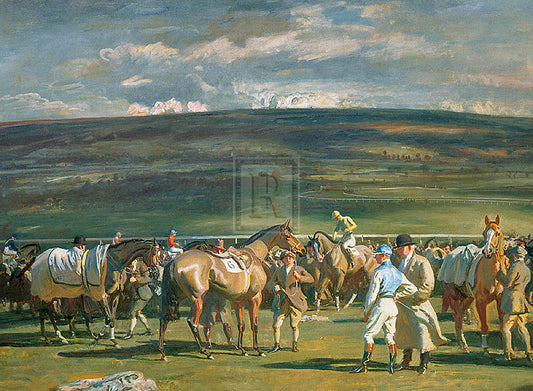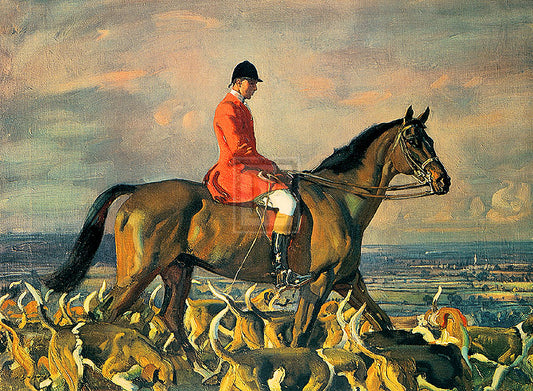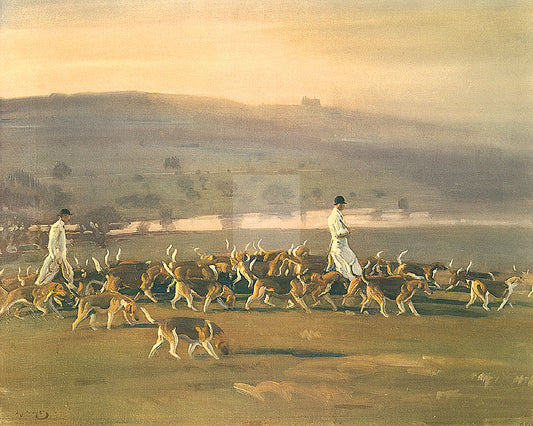Collection: Sir Alfred Munnings
Limited edition goutelette prints by the one of the greatest sporting artists of all time. Each print is hand numbered, accompanied by a certificate signed by the Master Printer and is numbered to match the print. The editions are limited to 1880 copies.
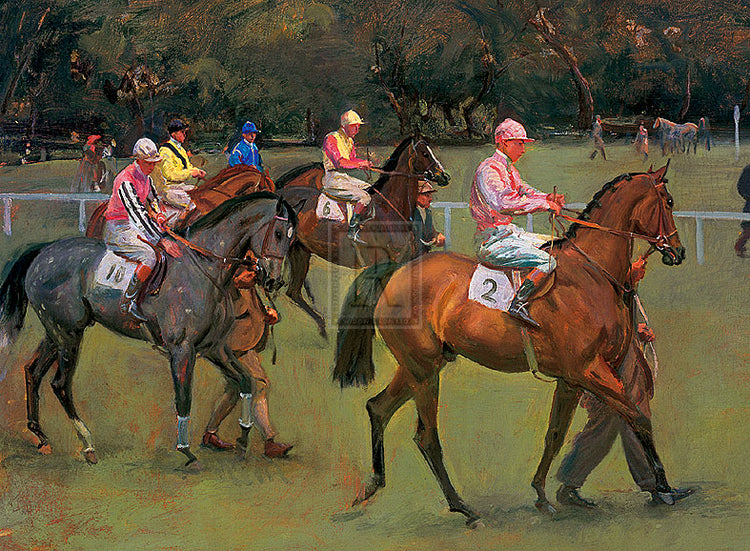
Collapsible content
More on Sir Alfred Munnings
Sir Alfred Munnings (1878-1959) was born in Mendham, Suffolk, to an East Anglian farming family. He first indicated his artistic talent during his apprenticeship to a firm of lithographers in Norfolk, where he studied at Norwich School of Art in the evening. By 1899, he had exhibited two paintings at the Royal Academy.
After working as an official artist in the First World War, Munnings married and settled permanently at Castle House, in Dedham, Suffolk. Concentrating particularly upon equestrian work, he was so successful in what was, at the time, an unfashionable field that he rose from his relatively humble beginnings to become both a knight and the President of the Royal Academy between 1944 and 1949.
Munnings was an enthusiastic horseman and most of his greatest works featured either the racecourse or the hunt. His sporting scenes have developed a reputation as being amongst the greatest of twentieth century. He also painted very personal interpretations of the English countryside, as well as portraits, but these themes tended to be eclipsed by his tremendous success as a sporting artist.
Munnings’s reputation was always slightly tarnished for contemporary critics because of his very blunt, strong minded personality and his opposition to the abstract work which was becoming increasingly popular but, more recently, he has received the acclaim his outstanding work deserves.
With Stubbs and Herring, Munnings is one of a trio of the greatest sporting artists of all time. His best original paintings now sell for figures in excess of £1,000,000 and a record price of £2,700,000 was paid for his painting Lord and Lady Mildmay of Flete with their Children at Christie’s in 1999. Munnings’s work is now on display at many of the most prestigious galleries and museums in the world.
What is Goutelette printing?
The new gouttelette process is a highly refined form of digital printing. It allows the use the beautiful uncoated papers, which are better for image reproduction because they allow the ink more easily to travel down the paper fibres and into the sheet ("wicking"), and better for quality because the coating used on many coated papers can make the print more prone to fading. The gouttelette process, combined with the traditional skills and experience of the printing team, thus creates results far superior to the average digital print.
Printed onto the highest quality archival substrates and using only very specialised inks, gouttelette prints have the remarkable colour saturation and continuous tone characteristics one would expect of an original painting. In fact, with an apparent visual resolution of over 1800 dpi (dots per inch), distinguishing a gouttelette from an original can be very difficult, even to the expert eye
Gouttelettes are generally printed onto acid-free calcium carbonate-buffered archival watercolour paper or onto fine archival-quality cotton canvas coated with an acid free primer. On light-fastness, the ink and paper combinations generally used meet the standards of both the Fine Art Trade Guild's blue wool scale and those of Wilhelm Imaging Research in America. And, leaving aside the technical specification, the quality of the print is fantastic! All images in this gallery are copyright Felix Rosenstiel's Widow and Son. No reproduction without permission.
-
Sir Alfred Munnings - Solario
Regular price From £180.00 GBPRegular priceUnit price / per -
Sir Alfred Munnings - At the Races
Regular price From £180.00 GBPRegular priceUnit price / per -
Sir Alfred Munnings - Exercising, Early Morning, Newmarket
Regular price From £180.00 GBPRegular priceUnit price / per -
Sir Alfred Munnings - Under Starters Orders
Regular price From £180.00 GBPRegular priceUnit price / per -
Sir Alfred Munnings - Before the Start
Regular price From £180.00 GBPRegular priceUnit price / per -
Sir Alfred Munnings - After the Race
Regular price From £190.00 GBPRegular priceUnit price / per -
Sir Alfred Munnings - October Meeting
Regular price From £180.00 GBPRegular priceUnit price / per -
Sir Alfred Munnings - The Drum Horse
Regular price From £65.00 GBPRegular priceUnit price / per -
Sir Alfred Munnings - The Saddling Paddock, Cheltenham
Regular price From £180.00 GBPRegular priceUnit price / per -
Sir Alfred Munnings - Portrait of Major T Bouch with the Belvoir Hounds
Regular price From £180.00 GBPRegular priceUnit price / per -
Sir Alfred Munnings - Belvoir Hounds Exercising in the Park
Regular price From £180.00 GBPRegular priceUnit price / per

